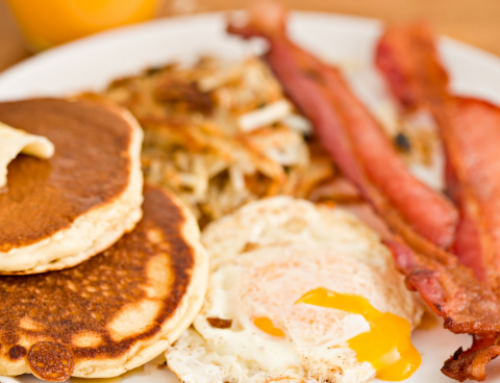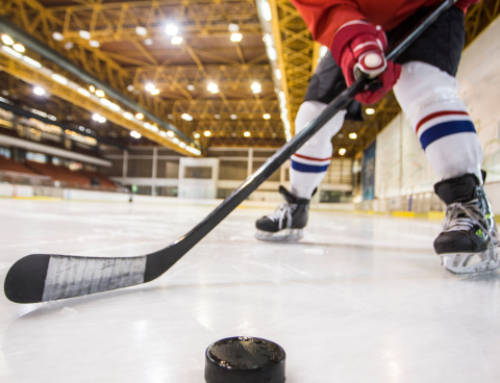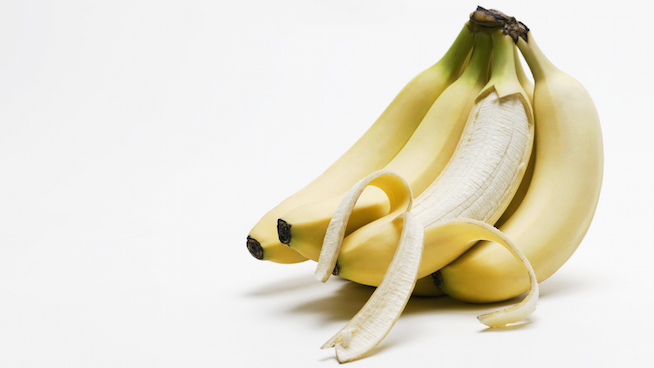A Guide to Summer Eating
Whether you’re pre-season conditioning or preparing for tourneys and camps, fueling right every day, especially in the heat, is a must to maximize your energy and maintain your mad game. Below, James Harris, sports nutrition coordinator for the University of Nebraska-Lincoln, guides you through a healthy, summer eating plan.
When you sleep, your body endures a long period without nutrients, so replenishing them in the a.m. is crucial. A breakfast consisting of 55 percent carbs and 25 percent low-fat protein will energize your body and jumpstart your metabolism. Eat a light mid-morning snack to keep it stimulated.
For lunch, lean meat and whole grains should provide the bulk of your calories. Add a piece of fruit or a veggie to help you reach the daily recommendation of 25 grams of fiber, which regulates digestion, removes toxins and reduces large spikes in blood sugar.
Thirty to 45 minutes before you hit the weight room, grab a 300-calorie pre-workout snack to give your muscles extra energy to burn. To aid recovery, within 20 minutes of training, nosh on a post-workout snack that’s a moderate combo of protein and carbs. Besides replenishing lost energy, it will prepare your body for the next workout.
To provide a large amount of nutrients, which also play a big role in recovery, feed your body even more at dinner. Like lunch, dinner should consist of lean meat and whole grains, but with a bigger serving of fruits and vegetables. Cap your day with a late snack. This will stimulate your metabolism and keep your body in a positive energy balance.
Remember to drink a lot with each snack and meal to ensure adequate hydration. Never skip meals, either. That can lead to muscle breakdown, which causes you to burn fewer calories, have less energy and slows your body’s ability to recover from workouts.
Below is a breakdown of sample meals.
| Breakfast | Mid-Morning | Lunch | Pre-Workout | Post-Workout | Dinner | Late Snack |
| ½ whole wheat bagel w/ peanut butter [PB]; 4 egg whites; water or low fat milk; multi-vitamin |
String cheese | Turkey, roast beef or ham w/ provolone cheese on whole wheat bread; trail mix; baby carrots; water, low fat milk or a sports drink |
½ PB sandwich on whole wheat bread; water or a sports drink | 8 oz. chocolate milk |
Spaghetti* with lean meat sauce; steamed veggies *Whole wheat pasta enhances the meal |
Cottage cheese and fresh fruit |
| 2 pieces of fruit; 2 pieces of lean deli meat; orange juice; multi-vitamin | Celery sticks w/ PB | Grilled chicken sandwich; Jell-O®; fruit; water, low fat milk or a sports drink |
1 scoop of whey protein in 10 ounces of a sports drink | Turkey sandwich; use lean meat and whole-grain bread | Fish; baked sweet or regular potato [limit butter and sour cream]; salad w/ small amount of dressing | Low fat yogurt |
James Harris, MS, RD, LMT, is an active member of Sports, Cardiovascular and Wellness Nutritionists [SCAN] and the International Society of Sports Nutrition [ISSN]. He also oversees nutrition planning for NFL draftees.
RECOMMENDED FOR YOU
MOST POPULAR
A Guide to Summer Eating
Whether you’re pre-season conditioning or preparing for tourneys and camps, fueling right every day, especially in the heat, is a must to maximize your energy and maintain your mad game. Below, James Harris, sports nutrition coordinator for the University of Nebraska-Lincoln, guides you through a healthy, summer eating plan.
When you sleep, your body endures a long period without nutrients, so replenishing them in the a.m. is crucial. A breakfast consisting of 55 percent carbs and 25 percent low-fat protein will energize your body and jumpstart your metabolism. Eat a light mid-morning snack to keep it stimulated.
For lunch, lean meat and whole grains should provide the bulk of your calories. Add a piece of fruit or a veggie to help you reach the daily recommendation of 25 grams of fiber, which regulates digestion, removes toxins and reduces large spikes in blood sugar.
Thirty to 45 minutes before you hit the weight room, grab a 300-calorie pre-workout snack to give your muscles extra energy to burn. To aid recovery, within 20 minutes of training, nosh on a post-workout snack that’s a moderate combo of protein and carbs. Besides replenishing lost energy, it will prepare your body for the next workout.
To provide a large amount of nutrients, which also play a big role in recovery, feed your body even more at dinner. Like lunch, dinner should consist of lean meat and whole grains, but with a bigger serving of fruits and vegetables. Cap your day with a late snack. This will stimulate your metabolism and keep your body in a positive energy balance.
Remember to drink a lot with each snack and meal to ensure adequate hydration. Never skip meals, either. That can lead to muscle breakdown, which causes you to burn fewer calories, have less energy and slows your body’s ability to recover from workouts.
Below is a breakdown of sample meals.
| Breakfast | Mid-Morning | Lunch | Pre-Workout | Post-Workout | Dinner | Late Snack |
| ½ whole wheat bagel w/ peanut butter [PB]; 4 egg whites; water or low fat milk; multi-vitamin |
String cheese | Turkey, roast beef or ham w/ provolone cheese on whole wheat bread; trail mix; baby carrots; water, low fat milk or a sports drink |
½ PB sandwich on whole wheat bread; water or a sports drink | 8 oz. chocolate milk |
Spaghetti* with lean meat sauce; steamed veggies *Whole wheat pasta enhances the meal |
Cottage cheese and fresh fruit |
| 2 pieces of fruit; 2 pieces of lean deli meat; orange juice; multi-vitamin | Celery sticks w/ PB | Grilled chicken sandwich; Jell-O®; fruit; water, low fat milk or a sports drink |
1 scoop of whey protein in 10 ounces of a sports drink | Turkey sandwich; use lean meat and whole-grain bread | Fish; baked sweet or regular potato [limit butter and sour cream]; salad w/ small amount of dressing | Low fat yogurt |
James Harris, MS, RD, LMT, is an active member of Sports, Cardiovascular and Wellness Nutritionists [SCAN] and the International Society of Sports Nutrition [ISSN]. He also oversees nutrition planning for NFL draftees.











